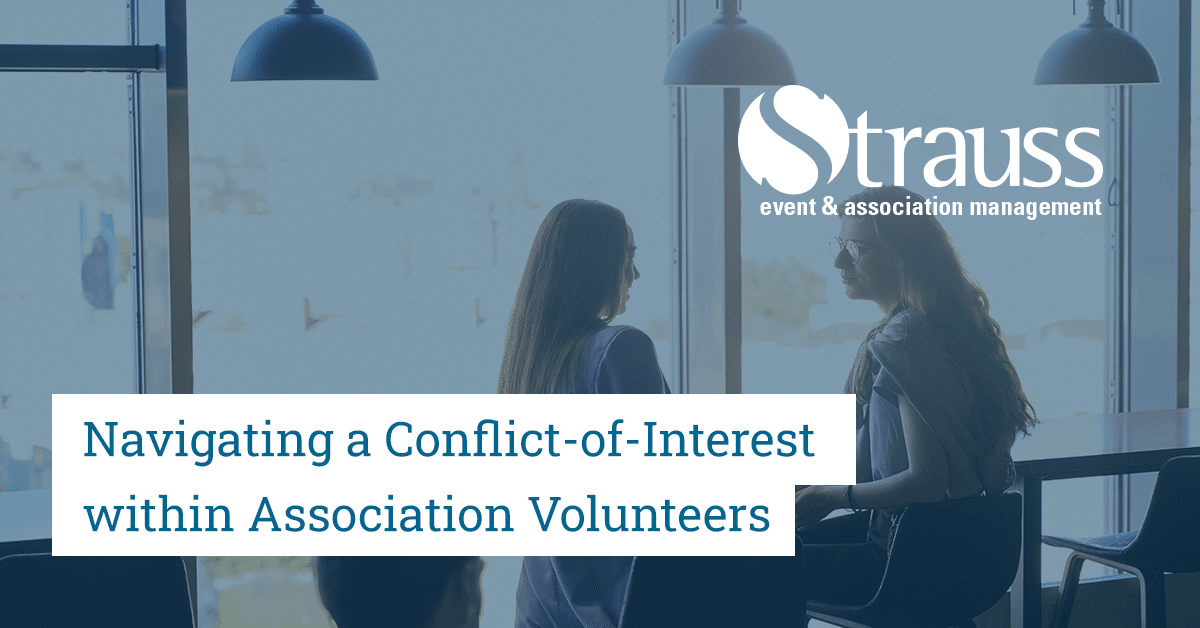Volunteering as an association Board or committee member is a valiant role; it is a very selfless role that asks you to give up your personal free time to work towards a better association. A part of contributing to said association is knowing when and where you are valuable and needed and when it’s better to take a step back.
If operating ethically and using best practices, all association volunteers should be asked to complete a conflict-of-interest form when undertaking a new role or project. By completing this form, volunteers are given the opportunity to disclose any past or current relationships that may interfere with an unbiased opinion on the given matter. By self-declaring any potential conflicts of interest, volunteers may excuse themselves from certain situations should their bias or previous experience taint their opinion on the matter. Learn more about identifying your conflict of interest in my colleague article, “Are You in a Conflict of Interest?”.
Navigating conflicts of interest is a crucial aspect of being an association volunteer leader. Here are some key points:
1. Recognize Potential Conflicts
The first step is to understand what constitutes a conflict of interest. This could be a situation where a volunteer leader’s personal or professional interests could potentially interfere with the best interests of the association.
2. Open Communication
If a potential conflict arises, it’s important to communicate openly about it and to review/complete COI forms. Always encourage a safe space where everyone can share their opinions. Transparency is key in these situations.
3. Distance from Decision Making
If an issue involves a volunteer’s family member or colleague, it’s important to create as much distance as possible between them and the decision. This helps to maintain objectivity and fairness. Volunteers can also choose to step away from the association’s business regarding said conflict.
4. Conflict of Interest Policy
Every association should have a clear conflict of interest policy. This provides a framework for identifying and managing conflicts of interest and ensures everyone understands the process. Read about association conflicts of interest policies in another one of my colleague’s articles, “The Importance of Conflict of Interest Policies within an Association’s Board”
Association volunteers and leaders should be continuously aware of any potential conflicts and should always be managing conflicts effectively. This will result in unbiased and productive conversations and solid decisions. Remember, perceived conflict can sometimes be worse than real conflict, so it’s important to manage both effectively.

